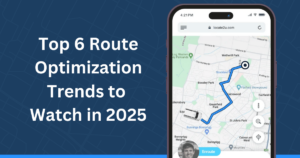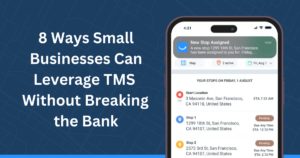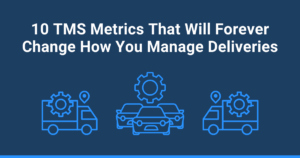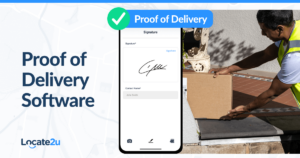
In this article, we will explore a range of cost optimization strategies for small delivery businesses.
In the ever-evolving landscape of small business delivery operations, finding effective cost optimization strategies is essential for success. As a small business owner, you understand the significance of managing expenses, especially when it comes to shipping costs. With rising shipping carrier fees and the need to deliver products in a timely manner, it’s crucial to implement strategies that can help lower average shipping costs while maintaining service quality.
From route optimization to packaging solutions and customer communication, we’ll provide you with actionable insights to help you optimize your delivery operations and reduce your average shipping costs. By implementing these strategies, you can achieve greater efficiency, cost savings, and an improved bottom line in your small business. Let’s dive in!
Cost Optimization Strategies for Small Delivery Businesses
Below are some cost optimization strategies for small delivery businesses:
Examining Shipping Prices
Analysis and comprehension of the breakdown of typical expenses are essential if small firms are to successfully optimize delivery costs. Businesses can enhance their bottom line by implementing focused tactics by identifying areas where costs can be optimized. Here, we’ll examine the main elements of delivery costs and offer instances of cost factors that small businesses should pay attention to.
An explanation of the typical delivery costs for small businesses
Fuel expenses make up a sizable portion of delivery operations. Small enterprises must take into account gasoline costs, vehicle fuel efficiency, and the length of each delivery run.
Vehicle Maintenance
The cost of delivery is influenced by routine vehicle maintenance, repairs, and insurance. Maintaining automobiles properly and taking care of any maintenance concerns as soon as they arise can help reduce unexpected expenses.
Labor expenses
Labor expenses consist of the wages or salaries paid to drivers, delivery crew, and administrative people who oversee delivery operations. Labor costs can be optimized through effective labor utilization and appropriate training.
Identifying Potential Cost-Reduction Areas
- Planning and optimizing the route: Poor route planning might result in time and fuel waste. Small businesses can cut mileage and make the best use of resources by employing route optimization solutions.
- Vehicle utilization: Utilizing vehicles to their fullest potential and reducing empty or unused trips can have a big influence on delivery costs. Vehicle utilization can be improved with effective load planning and consolidation.
- Fuel economy evaluations: Implementing fuel-saving measures, such as educating drivers on how to drive more fuel-efficiently, monitoring idle times, and considering alternate fuel sources, can save a lot of money.
- Process simplification: It could be beneficial to examine the delivery process from the time an order is placed to the point of delivery and identify bottlenecks or redundancies in order to optimize operations, reduce delays, and save money.

Fuel Cost Illustrations for Drivers
Changing fuel prices and inefficient driving patterns could result in higher fuel costs. By planning routes more efficiently and implementing fuel-saving strategies, such as reducing wasteful idling or using GPS monitoring to track driver behavior, businesses can lower their fuel expenses.
Poor vehicle maintenance can result in more frequent failures and more expensive maintenance. Preventive maintenance programs, prompt repairs, and routine maintenance checks help reduce unforeseen costs.
Excessive overtime, improper training, and ineffective labor use can all drive up labor costs. Labor costs can be efficiently managed by adopting driver training programs, streamlining delivery schedules, and automating administrative work with delivery management software.
Route optimization
Route optimization is a crucial component of delivery management that small firms can use to cut costs and improve operational effectiveness. Businesses can improve their delivery routes to achieve maximum efficiency and cost savings by utilizing cutting-edge algorithms and real-time data. Let’s see how route optimization lowers delivery costs and how Locate2u’s route optimization function contributes to these advantages.
Detailed Description of Route Optimization’s Effect on Delivery Costs
- Utilizing resources effectively: In order to reduce mileage and travel time, routes are optimized to determine the best order of stops. This lowers the cost of operation overall while reducing fuel consumption and vehicle wear and tear.
- Time savings: Routes that are optimized let truckers make deliveries more quickly, which cuts down on time spent driving. Businesses can handle more deliveries in the same amount of time as a result, increasing productivity and lowering personnel expenses.
- Enhanced Customer Satisfaction: For customers to be satisfied, delivery times must be accurate and reliable. Route optimization guarantees on-time deliveries, minimizing instances of delays or missed delivery windows that may result in customer displeasure or additional delivery costs.
Advantages of Delivery Route Optimization
- Reduced Fuel Consumption: Routes that are optimized eliminate the need for idling and backtracking, which lowers fuel consumption. This directly helps to reduce costs and sustain the environment.
- Enhanced Efficiency: By taking routes that are optimized, drivers can make more deliveries in less time, increasing operational efficiency. This makes it possible for firms to handle larger order quantities and boost potential revenue.
- Improved Customer Service: On-time deliveries made possible by route optimization increase customer satisfaction. Meeting delivery deadlines improves the company’s reputation, encouraging client loyalty and possibly repeat business.
- Lower Operational Costs: Route optimization lowers the costs of labor, gasoline, and vehicle maintenance, lowering overall costs and boosting small enterprises’ profitability.
Load balancing
A key component of delivery management, load balancing enables small enterprises to efficiently distribute products across their fleet of trucks. Effective load balancing makes sure that each vehicle is used to its fullest potential, which saves money, improves operational effectiveness, and has a smaller negative environmental impact. The significance of load balancing for small enterprises, the function of delivery management software in streamlining load distribution, and the manner in which Locate2u’s software supports efficient load balancing are all covered in this section.
Load balancing’s significance for small businesses
- Increased Vehicle Capacity: The number of trips necessary to deliver goods is reduced thanks to load balancing, which makes sure that vehicles are loaded to their maximum capacity. As a result, gasoline, labor, and vehicle maintenance expenses are reduced.
- Resource Optimization: By preventing underutilized or overloaded vehicles, good load balancing aids organizations in making the most use of their resources. It ensures that deliveries are spread equally, lowering the possibility of overtaxing some trucks while underutilizing others.
- Efficiency in Time and Money: By distributing loads efficiently, firms can decrease the number of cars on the road, saving time and cutting fuel costs. This increases overall operational effectiveness and financial success.
How Load Distribution is Optimized by Delivery Management Software
Based on variables including delivery addresses, vehicle capacity, and delivery priority, the software automatically distributes deliveries to vehicles. In order to reduce the number of cars needed while increasing capacity, it optimizes the load distribution.
To develop effective plans that balance loads, the program takes into account a variety of constraints, including delivery time windows, vehicle availability, and traffic conditions.
Utilizing Vehicles Efficiently
For small businesses that operate delivery services, effective vehicle usage is essential. Utilizing vehicles to their fullest potential reduces empty or unused journeys, which saves money and has a positive influence on productivity and the environment. The importance of effective vehicle usage, methods to reduce empty trips, and how delivery management software can offer useful information to enhance vehicle allocation and utilization are all covered in this section.
The Importance of Efficient Vehicle Use
- Cost savings: By utilizing vehicles efficiently, organizations can cut back on the labor, maintenance, and fuel costs related to pointless journeys. Businesses can save a lot of money by making the best use of their vehicles.
- Enhanced Productivity: Businesses may manage more deliveries in a given amount of time by maximizing truck utilization, which boosts overall productivity and operational effectiveness.
- Environmental Sustainability: Companies can support environmental sustainability by limiting carbon emissions and the entire ecological footprint connected with their delivery operations. This is done by avoiding empty or unused trips.
The Importance of Efficient Vehicle Use
- Cost savings: By utilizing vehicles efficiently, organizations can cut back on the labor, maintenance, and fuel costs related to pointless journeys. Businesses can save a lot of money by making the best use of their vehicles.
- Enhanced Productivity: Businesses may manage more deliveries in a given amount of time by maximizing truck utilization, which boosts overall productivity and operational effectiveness.
- Environmental Sustainability: Companies can support environmental sustainability by limiting carbon emissions and the entire ecological footprint connected with their delivery operations. This is done by avoiding empty or unused trips.

Techniques to Reduce Trips in Empty or Underutilized Vehicles
Consolidating loads reduces vehicle vacant space and improves capacity utilization by combining numerous deliveries into a single journey. Deliveries can be strategically planned by businesses to maximize load consolidation and reduce the number of vehicles that are only partially loaded.
- Flexible Planning: Businesses can efficiently combine deliveries based on geographic proximity and route optimization by offering variable delivery time frames. As a result, fewer separate journeys are required for each delivery, reducing the number of empty or inefficient vehicle trips.
- Route Optimization: Using techniques like clever algorithms and real-time data analysis, route optimization can assist find the most effective delivery routes. Routes that have been optimized decrease extraneous mileage, shorten travel times, and increase vehicle efficiency.
- Dynamic Modifications: The capacity to modify delivery schedules and routes in real-time in response to altering conditions or client demands aids in maximizing truck utilization. Businesses may use technology to quickly adjust and save unnecessary travel.
Fuel efficiency
Fuel Efficiency Improvement Advice for Delivery Operations
- Route optimization: By reducing unnecessary miles and fuel consumption, delivery routes can be made more efficient. Businesses may determine the most effective routes that use the least amount of gasoline to accomplish deliveries by leveraging cutting-edge algorithms and real-time data.
- Vehicle load optimization minimizes engine stress and increases fuel efficiency by properly balancing and dispersing loads inside of vehicles. Businesses should take care to avoid overloading or underloading cars because both situations can have a detrimental influence on fuel usage.
- Driver Behavior: Driver behavior can be greatly improved by educating drivers on fuel-efficient driving techniques, such as smooth acceleration and deceleration, maintaining stable speeds, and avoiding excessive idling.
- Regular vehicle maintenance: Regular vehicle maintenance, such as regular tire inflation, engine tune-ups, and oil changes, guarantees that cars run as efficiently as possible. Regular maintenance keeps cars operating smoothly and minimizes fuel inefficiencies brought on by mechanical problems.
The significance of driver conduct and vehicle upkeep
- Driver behavior: How people operate cars has a direct impact on how efficiently they use fuel. Promoting fuel-efficient driving practices helps drivers save money on fuel while also prolonging the lifespan of their vehicles and lowering maintenance costs.
- Vehicle maintenance: Vehicles that have had regular maintenance operate more effectively and use less fuel. Regular maintenance identifies and resolves problems like malfunctioning sensors, clogged filters, or inefficient engines that could have a negative influence on fuel efficiency.
Performance Analytics
Small firms can use performance analytics, a potent tool, to save expenses and boost the effectiveness of their delivery operations. Businesses can spot inefficiencies, identify areas for improvement, and put strategies into place to improve their entire operations by reviewing performance data. We will go through the value of performance analytics in cost optimization, how performance data can be utilized to spot inefficiencies, and how to put improvement techniques into practice in this part.
The Value of Performance Analytics in Data-Driven Cost Optimization
Decision Making Businesses may make wise decisions thanks to the useful insights offered by performance analytics, which are based on real-time data. Businesses can find inefficiencies, streamline procedures, and save costs by examining performance measurements.
- Continuous Improvement: By tracking key performance indicators (KPIs) over time with performance analytics, businesses are able to analyze progress, spot trends, and continuously enhance their delivery processes. Cost optimization is driven by this iterative approach, which also improves performance overall.
Finding Inefficiencies using Performance Data
- Analysis of Delivery Times: Analysis of delivery times enables the detection of bottlenecks, delays, or ineffective routes. To optimize routes and timetables, businesses might spot places where delivery times are regularly longer than anticipated.
- Metrics: Metrics for measuring vehicle usage include idle time, average load capacity, and underutilized vehicles. Performance data can help with this. These indicators can be analyzed to find chances to increase vehicle capacity, decrease idle time, and get rid of inefficiencies.
- Delivery Accuracy and Errors: Performance analytics can show delivery accuracy rates and spot repeated mistakes or inconsistencies. Businesses can decrease expensive errors, raise customer happiness, and enhance operational effectiveness by addressing these problems.
- Customer Feedback Analysis: Examining feedback from customers, including ratings, reviews, and comments, can reveal important information about what needs to be improved. Businesses can address persistent issues or grievances, improving their overall level of customer service and reducing costs.
Putting Improvement Strategies into Practice
Process optimization: Performance analytics assists organizations in identifying process improvement opportunities, such as in order processing, dispatching, or communication protocols. Businesses may cut expenses, avoid mistakes, and increase overall efficiency by streamlining operations.
- Training and Development: Performance information might point up areas that require extra training or development efforts. Businesses can improve the capabilities of their employees, resulting in improved performance and cost optimization, by addressing skill or knowledge gaps.
- Technology Integration: Performance analytics can identify areas where technology solutions, such delivery management programs like Locate2u, can be integrated. Businesses can automate operations, improve visibility, and reduce expenses by utilizing cutting-edge features and functions.
- Monitoring and evaluation should be done continuously for performance analytics. Businesses can evaluate the success of applied improvement measures, spot new problems, and adjust their operations by constantly monitoring performance data.

Cost Optimization Strategies for Small Delivery Businesses: Conclusion
Shipping fees and last mile delivery costs are significant factors that impact the profitability and customer satisfaction of small businesses. By implementing strategies to optimize delivery routes, businesses can lower shipping costs and enhance the efficiency of their last mile delivery operations. Additionally, considering factors such as shipping insurance and reliable delivery services further contributes to cost optimization and customer trust.
Effective route optimization plays a crucial role in helping reduce shipping costs. By leveraging advanced algorithms and real-time data analysis, businesses can identify the most efficient routes for their deliveries. Optimized routes minimize unnecessary mileage, reduce fuel consumption, and lower transportation costs. Implementing a reliable delivery management system like Locate2u provides businesses with the tools and capabilities to streamline their route planning process, leading to significant cost savings.
Choosing the right delivery service is also crucial for cost optimization. Reliable delivery services ensure timely and secure deliveries, minimizing the chances of delays or issues that could result in additional costs. Partnering with reputable courier services or utilizing the capabilities of a comprehensive delivery management system helps businesses maintain control over their deliveries, improve customer experience, and reduce expenses associated with re-shipments or customer dissatisfaction.
Optimize your delivery operations with Locate2u
Ready to optimize your delivery operations and lower shipping costs? Discover the power of Locate2u’s delivery management software today. Streamline your routes, track deliveries in real-time, and enhance customer satisfaction. Take control of your last mile delivery operations and boost your business’s success.
Get started with Locate2u now!













